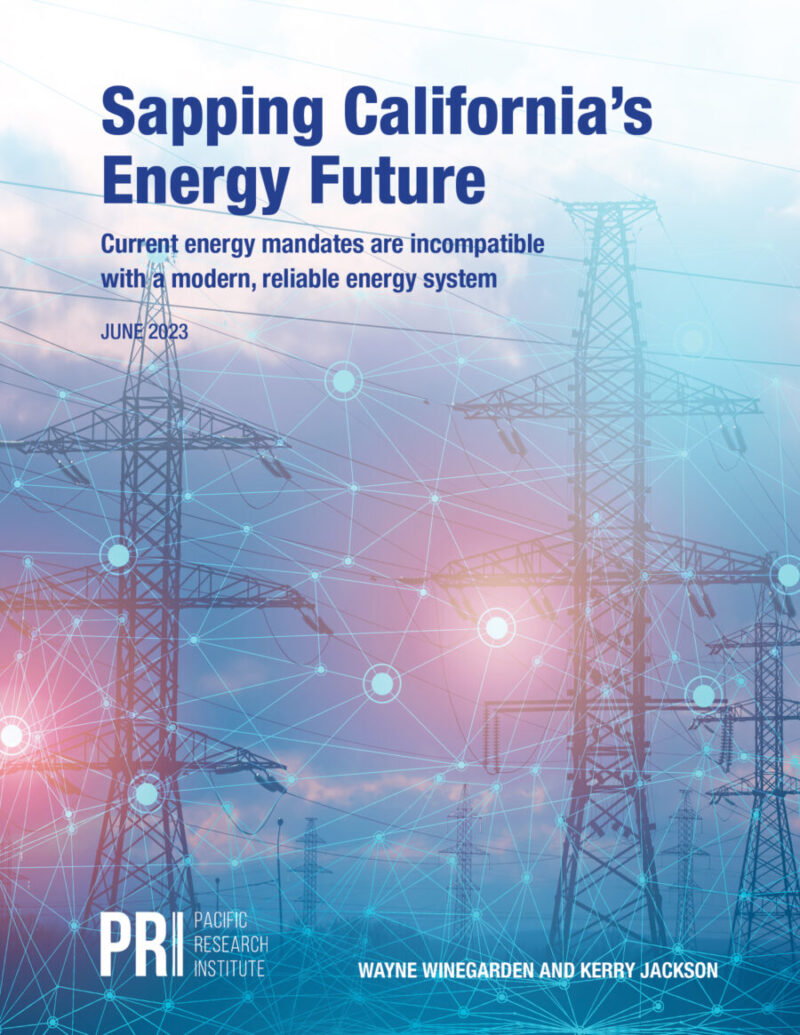California will fall 21.1 percent short of the electricity required to meet the state’s 100 percent electric vehicle mandates, finds a new report from the nonpartisan California free-market think tank, the Pacific Research Institute.
“California’s green energy mandates will require families and businesses to consume more energy from the electricity grid instead of fossil fuels, making it less likely that we can generate the necessary power,” said Dr. Wayne Winegarden and Kerry Jackson, the study’s authors. “These policies jeopardize California’s energy security and, without a miracle leap in technology, set us up for future energy shortages.”
In September 2020, Gov. Newsom signed an executive order requiring all new passenger cars and light trucks sold in California to be zero-emission vehicles by 2035.
“Sapping California’s Energy Future” explores how implementing the EV mandate, combined with other state green mandates, will create avoidable energy shortages. Analyzing state data and conducting their own calculations, Winegarden and Jackson found that:
- Two-thirds of current electricity comes from disfavored sources: Nearly 60 percent of current state electricity generation comes from natural gas and nuclear power. Including hydroelectric power that does not count as renewable power, two-thirds of state power today comes from disfavored sources.
- Total electricity generation will be 21.1 percent short of projected demand: Assuming that other state residential electricity consumption remains flat—the trend since 2006—California will require a 20.2 percent increase in electricity consumption to meet the EV mandates and increased charging demand. Compared to projections of electricity generation, total generation will be 21.1 percent short of projected demand.
- Deficit much worse when other green mandates factored in: The actual electricity generation deficit will likely be much worse, as the PRI report does not factor in additional demand to meet other green mandates, such as prohibitions on gas-powered heaters and air conditions.
- State will have to increase annual addition of alternative energy by 86 percent: To meet government-imposed renewable energy transition deadlines, California will have to expand its annual addition of renewables by 86 percent.
Many renewable energy sources, such as wind and solar, are volatile and erratic, and require significant, expensive land and infrastructure investments—costs that will be borne by ratepayers.
Winegarden and Jackson argue that California should repeal its green mandates and instead promote market-based climate change policies. They conclude that Sacramento should embrace technologies that are efficient today and will promote the innovations required to secure a low-emission energy system.
“Energy policy should not be crafted based on the whims of a few hundred policymakers who want to design the future,” said Winegarden and Jackson. “Sacramento must prioritize promoting innovation to meet California’s clean energy goals while keeping energy abundant and affordable.”

